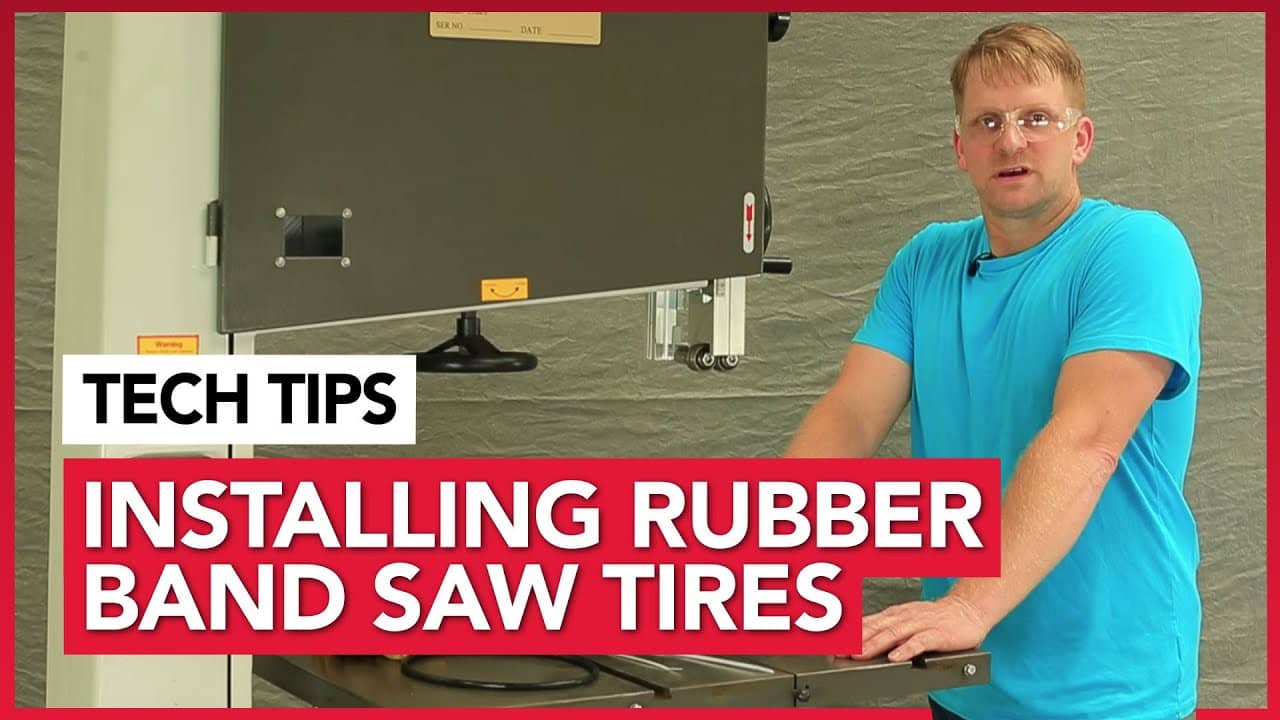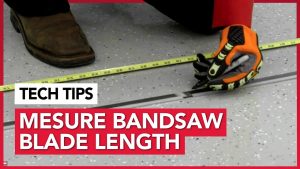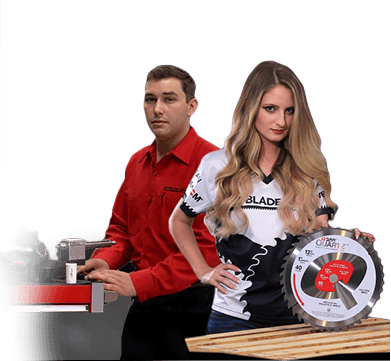The maintenance of a bandsaw is vital for its performance and longevity. A core component that often requires attention is the bandsaw tire. Installing rubber bandsaw tires can significantly enhance the machine’s cutting precision, lifespan, and safety. This detailed guide will take you through the steps involved in replacing bandsaw tires, supplemented by tips and tricks to streamline the process.
Preparing Your Workspace
Firstly, before embarking on any repair or maintenance work, it is essential to prepare your workspace adequately. Disconnect the power from your bandsaw to prevent any accidental start-ups. If feasible, consider removing the wheels from the saw. This gives you more room to work and can make installing the tire easier.
Ensure your workspace is clear of sawdust and other debris, as these could interfere with the installation process. Furthermore, working in a well-ventilated area is highly recommended, as you will need to use solvents to clean the rim of the wheel.
Understanding Bandsaw Tires
Rubber bandsaw tires are a vital part of your bandsaw that often requires replacement or maintenance. They cushion the blade and prevent metal-to-metal contact with the wheel, which could damage both the blade and the wheel. Proper tire installation ensures even blade tension, precise cuts, and extended machine life.
The rubber tire should fit snugly on your wheel. It may appear too small initially, but rest assured it is not. If you’re unfamiliar with the process, you might want to check out this helpful video on installing rubber bandsaw tires.
Tools You Will Need
Before starting, gather all necessary tools. Essential items include rubber-safe solvents for cleaning, zip ties, an o-ring or plastic strap, and gloves for safety. Gloves not only protect your hands but also offer a better grip when installing the tire.
The Installation Process
Now let’s delve into the actual process of installing rubber bandsaw tires. The first part involves stretching the tire in place.
- Begin by sliding a portion of the tire onto the wheel.
- Fasten the tire on the wheel at 3 and 9 o’clock using zip ties.
- Stretch the tire down to the opposite side of the wheel.
- Pull one side of the tire out to the wheel’s rim at a right angle with one hand, and with your other hand, work the tire over the rim. If the tire is too resistant, use wood or steel levers (avoid sharp corners to prevent tire damage).
- Repeat the process for the other side of the wheel.
For an alternate method, you can use an o-ring or a piece of plastic strap. Loop your o-ring through, pull back towards the wheel, and give it a helping hand on the left side.
Post-Installation Checks
After installing your new tire, always verify that it’s correctly and evenly installed around the wheel. There should be no lumps, bumps, or uneven stretches on the surface. If there are, they may affect the tire’s balance, leading to rough cuts or excessive vibration.
Frequently Asked Questions
Bandsaw tires wear out over time due to regular use. This can affect the machine’s performance and the quality of your cuts. If your bandsaw vibrates excessively or the blade does not track correctly, it may be time to replace your tires.
While it’s not mandatory to remove the wheels from the saw for tire replacement, doing so can make the installation process easier and more comfortable. However, this may not be feasible with larger saws.
Yes, with the right tools and instructions, you can install a bandsaw tire yourself. This article provides a detailed guide on how to do so. If you encounter any difficulties, consider consulting a professional.
A correctly installed bandsaw tire should fit snugly and evenly around the wheel without any bumps, lumps, or uneven stretches. If you notice any of these issues, recheck your installation.
Conclusion
Remember, installing rubber bandsaw tires is not just a maintenance task but a way to ensure the longevity and effectiveness of your bandsaw. Remember, at Sawblade.com, we’re all about No Markup, No Middleman, No Problems. Go Direct, and enjoy the savings and efficiency that comes with well-maintained tools.






